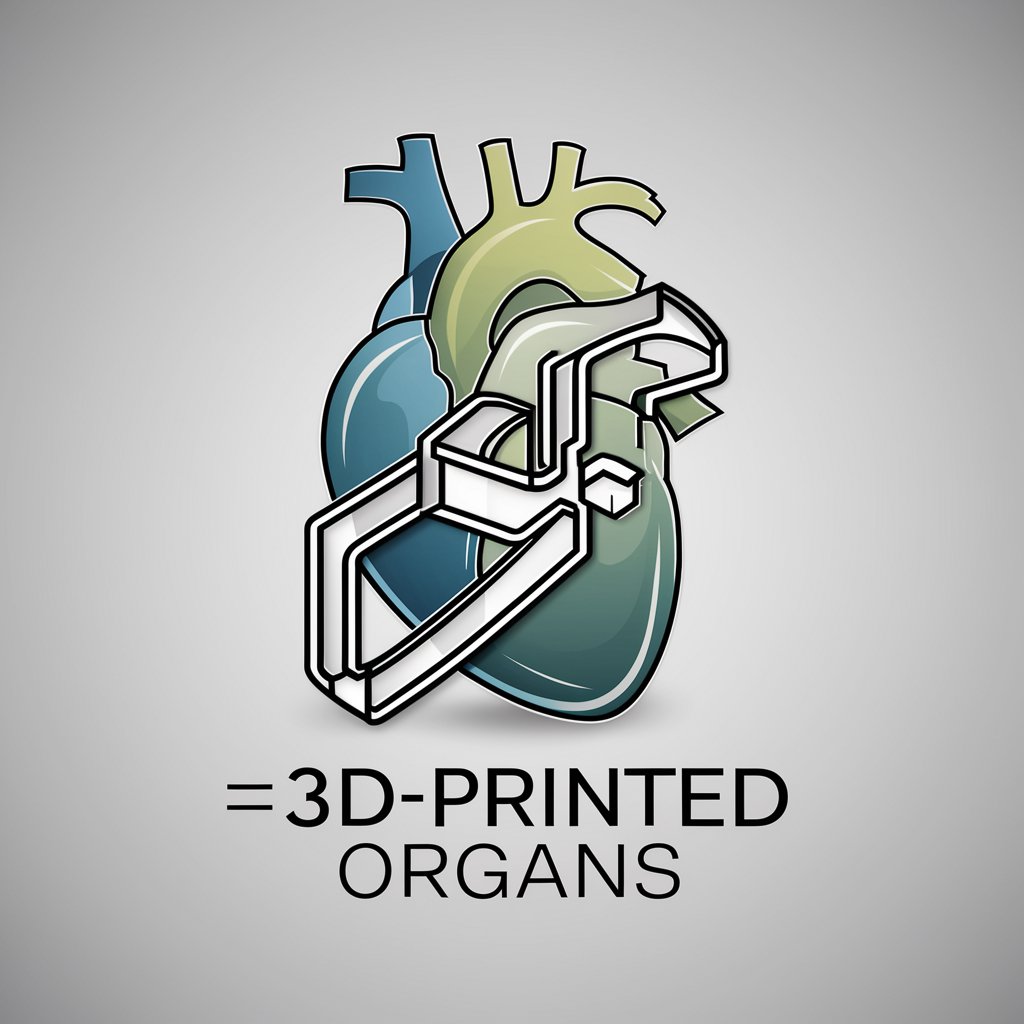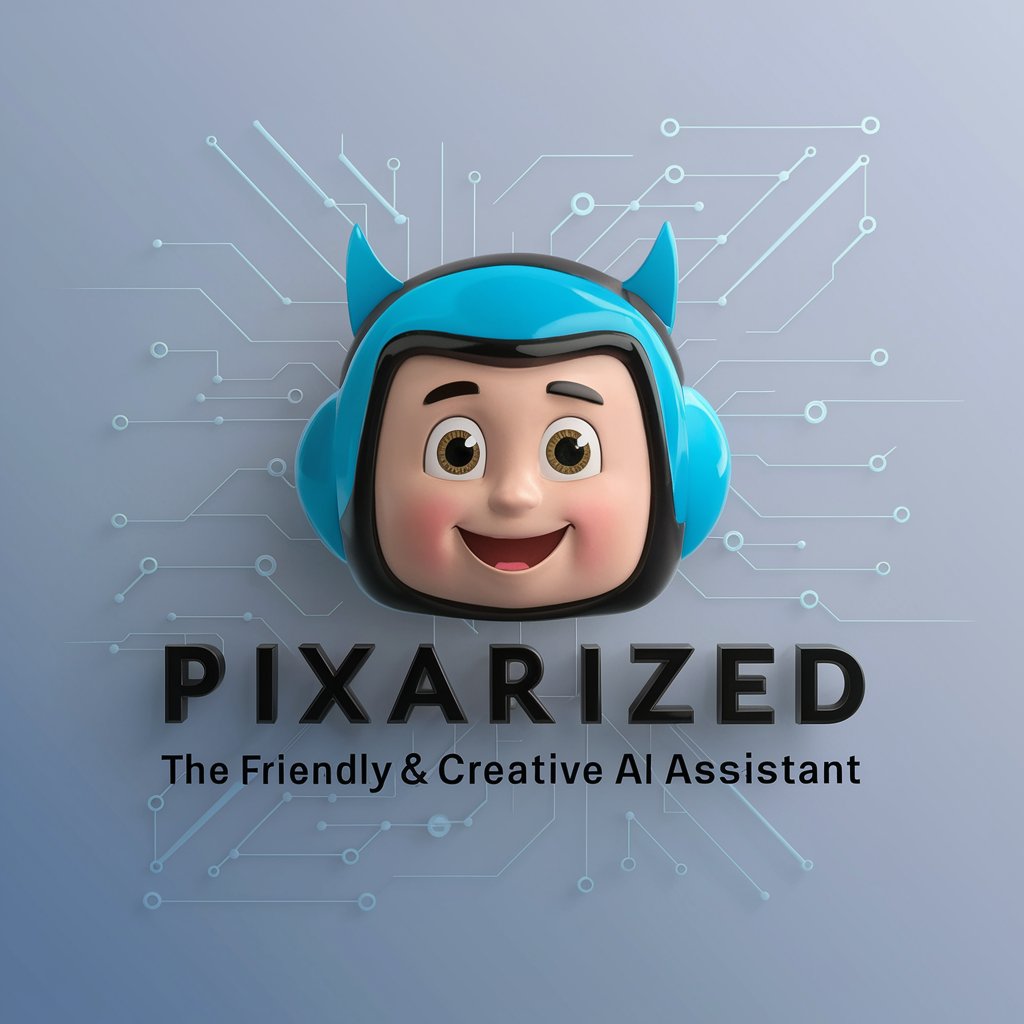3D-Printed Organs - 3D-Printed Organ Insights

Welcome! Let's explore the future of organ transplantation technology together.
Revolutionizing Transplants with AI
Explain the process of 3D-printing organs using a patient's own cells.
Discuss the ethical implications of genetically engineered pig organs for human transplantation.
Describe the latest advancements in 3D bioprinting technology for creating functional organs.
What are the potential future developments in organ transplantation technology?
Get Embed Code
Introduction to 3D-Printed Organs
3D-printed organs represent a groundbreaking advancement in biomedical technology, aiming to address the critical shortage of transplantable organs worldwide. This innovative approach utilizes 3D printing technology to create complex tissue structures and organs that can mimic the function of natural organs. The process typically involves bio-printing, where layers of biocompatible materials, cells, and growth factors are precisely deposited to form tissue-like structures. These printed organs are designed to be accepted by the human body, reducing the risk of rejection and the need for lifelong immunosuppressive drugs. Examples of its application include creating functional skin for burn victims, blood vessels for heart disease patients, and even complex organs like kidneys or livers for transplantation. The ultimate goal is to provide custom-tailored organs that perfectly match the patient's biological and anatomical requirements, thus revolutionizing transplant medicine and opening new horizons for personalized healthcare. Powered by ChatGPT-4o。

Main Functions of 3D-Printed Organs
Customizability
Example
Tailoring a kidney to match a patient's specific anatomical and cellular characteristics.
Scenario
A patient with end-stage renal disease requires a kidney transplant. Traditional donor matching processes are lengthy and often imperfect. 3D-printed kidneys can be customized to match the recipient's size, shape, and cellular makeup, significantly reducing the risk of rejection and improving transplant outcomes.
Reducing Organ Shortage
Example
Printing functional liver tissues for patients with liver failure.
Scenario
With the severe shortage of donor livers, many patients die waiting for a transplant. 3D-printed liver tissues can be used to repair damaged portions of the liver or, in the future, create entire livers for transplantation, drastically reducing waiting times and saving lives.
Research and Drug Testing
Example
Using bio-printed tissues for testing new drugs.
Scenario
Pharmaceutical companies require accurate models to test the efficacy and safety of new drugs. 3D-printed tissues provide a more accurate representation of human organs than animal models, allowing for better prediction of how a drug will perform in humans, thereby speeding up the development process and reducing reliance on animal testing.
Ideal Users of 3D-Printed Organs Services
Patients in Need of Transplants
Individuals suffering from organ failure or damage who are on long waiting lists for donor organs. These patients would benefit significantly from 3D-printed organs, as they could receive custom-made organs faster, reducing waiting times and the complications associated with prolonged organ failure.
Medical Researchers
Scientists and researchers focused on understanding human organ function, disease mechanisms, or drug interactions. 3D-printed tissues offer a highly accurate and ethical platform for conducting human-relevant studies without the need for human or animal subjects.
Healthcare Providers
Surgeons, transplant specialists, and other healthcare providers involved in organ transplantation and repair. These professionals can leverage 3D-printed organs to offer more effective treatments, tailor-made for their patients, improving outcomes and patient satisfaction.

How to Use 3D-Printed Organs
1
Start by exploring yeschat.ai to engage with 3D-Printed Organs without the need for registration or subscription.
2
Understand the medical prerequisites, including patient-specific data like imaging and tissue samples, essential for custom 3D-printed organ production.
3
Consult with medical professionals and bioengineering experts to evaluate the viability and compatibility of a 3D-printed organ for transplantation.
4
Prepare for the surgical procedure, ensuring all ethical considerations and patient consent are comprehensively addressed.
5
Post-surgery, follow a meticulously planned recovery and monitoring schedule to ensure the best outcome and integration of the 3D-printed organ.
Try other advanced and practical GPTs
Optimized Database Schema
Design Databases Smartly with AI

Corp Project Name
Crafting Names, Powering Ideas

简单超能_EasySuper (Meditation, 冥想,修仙,第三眼,松果体,修行,灵魂)
Empowering your spiritual journey with AI

AI Times
Tailored News at Your Fingertips

C-Suite
Empowering decisions with AI-driven C-suite expertise

Pixarized
Transform photos into Pixar-style characters.

Code Interpreter Test
Elevating Code Quality with AI

The Spell
Deep Dive into 'Shadow Slave' with AI

Makipag-chat kay Santa Claus
Bringing Christmas Magic to Chat

SQL Stac
AI-powered SQL Optimization Tool

Serenity Guide
Empowering mental wellness with AI

Review of Auditing Tutor
Empowering auditing education with AI

Detailed Q&A about 3D-Printed Organs
What are 3D-printed organs?
3D-printed organs are biological constructs created using additive manufacturing technologies, incorporating patient-specific cells, to replicate the structure and function of natural organs.
How do 3D-printed organs compare to traditional transplants?
3D-printed organs aim to reduce transplant waitlists and the risk of rejection by using patient-derived cells, offering a personalized approach compared to traditional donor transplants.
What materials are used in 3D-printing organs?
Bioinks, composed of living cells mixed with supportive biomaterials, are used to print organs layer by layer, mimicking the complex structure of natural tissues.
What are the ethical considerations of 3D-printed organs?
Ethical considerations include ensuring equitable access, managing patient expectations, and navigating the implications of creating life-sustaining organs outside the human body.
What is the future potential of 3D-printed organs?
The future potential includes eliminating organ shortages, reducing transplant rejections, and even enhancing organs with functionalities beyond those of their natural counterparts.
